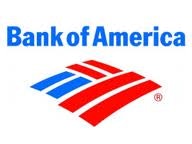The Federal Reserve or Fed has been regulating interest rates since the last financial crisis in an effort to keep the yield curve flat to encourage borrowing.

With long-term rates no longer in the Fed’s control I believe both these banks will face more headwinds in the form of lower earnings potential and book-value erosion. A bank’s book value becomes more exposed to moves in interest rates when the duration of its fixed income portfolio is large. Let’s see how rising interest rates will impact the aforementioned banks.
When the rates were in control
To stimulate the US economy in general, and the labor and housing markets in particularly, the Fed decided to run an aggressive bond buying program, known as Quantitative Easing or QE. The aim was to keep long-term rates low, while enforcing a near zero policy rate (short-term rate). The result was a flat interest rate yield curve that would encourage consumers to take out more loans, ultimately stimulating the economy.
However, that didn’t happen, and since the end of May, the rates started climbing after markets started pricing in the unwinding of the QE. During the first quarter, the yield on 10-year Treasury increased only 1 basis point (bps), while the 30-year fixed mortgage rate increased 23 bps. As a result, already sluggish U.S. loan demand was hit further. Bank of America Corp (NYSE:BAC) and PNC Financial Services (NYSE:PNC) reported 1.5% and 1% sequential increase in their loans portfolio during the first quarter of the current year. Wells Fargo & Co (NYSE:WFC), the largest home lender, was able to post a similar 2% surge in its total loan portfolio during the first quarter.
In contrast to the first quarter, the yield on the 10-year Treasury increased 62 bps this quarter, while the 30-year fixed mortgage rate advanced 75 bps. So, the rates increased significantly this quarter, compared to the earlier quarter. This means you can expect a significant decline in loan demand in the U.S. this quarter.
Book-value erosion
The woes don’t stop here. Besides, anticipating sluggish loan growth, these banks are expected to report declines in their book values as rates continue their upwards journey.
For Bank of America Corp (NYSE:BAC), tangible book value can be expected to plunge as much as 3% if rates climb 100 bps, while PNC Financial Services (NYSE:PNC)’s tangible book value can decline by 2.9% in a similar scenario. The largest decline in tangible book value was expected for Wells Fargo. Credit Suisse Group AG (ADR) (NYSE:CS) estimated a 4.5% decline in Wells Fargo’s tangible book value if rates go up 100 bps. However, the actual decline was only —-%. Since financial stocks trade in relation to their tangible book values, investors will be interested in the book value erosion of these banks.
Another key data point for a banking institute is its tangible common equity. If rates go up 100 bps, PNC Financial Services (NYSE:PNC)’s and Bank of America Corp (NYSE:BAC)’s tangible common equity could fall 0.26% and 0.21%, respectively. So, Bank of America and PNC Financial would experience declines in two key matrices if the rates climb further. Wells Fargo was again expected to report the highest decline, 0.4%, in its tangible common equity if rates go up 100 bps. In contrast, to concerns related to book value erosion at Wells Fargo, the bank reported a relatively flat book value, which I believe was the result of some fixed income portfolio re-balancing efforts.
One of the reasons why the aforementioned banks will experience declines in their book values, while some banks (like JPMorgan Chase & Co. (NYSE:JPM) and U.S. Bancorp (NYSE:USB)) are expected to report growth in their book values is the difference between the durations of the available-for-sale securities. The longer the duration of the fixed income portfolios, the more sensitive its book value is to any changes in the interest rates.
Net Interest income
Another key impact of changes in interest rates is the sensitivity of the banks’ net interest income. Net interest income is the difference between what banks earn on their interest earning assets and what they pay on their interest bearing liabilities. Let’s look at the sensitivity of net interest incomes for the banks considered in this article.
Looking at the financial disclosures provided by the banks and reported by Credit Suisse, Bank of America’s projected net interest income will increase the most if the rates climb 100 bps. Investors should expect the net interest income of Bank of America to climb 8.9%, while they should not experience any significant changes in PNC Financial Services (NYSE:PNC)’s net interest incomes if rates go up 100 bps. Wells Fargo reported a net interest margin of 3.46%, down 2 bps over the prior quarter.
Conclusion
I believe investors should be cautious before making an investment decision in banking stocks given rising interest rates. The rise in rates does not mean higher income for all the banks. The decline in book values of banks should also be considered before making an investment decision.
I believe Bank of America and PNC Financial are the three large cap banks that will be hurt the most because of the rising interest rate environment. So, I would recommend investors stay away from these banks in the near-term.
Adnan Khan has no position in any stocks mentioned. The Motley Fool recommends Bank of America and Wells Fargo. The Motley Fool owns shares of Bank of America, PNC Financial Services, and Wells Fargo.
The article Rising Rates a Headwind for these Banks originally appeared on Fool.com and is written by Adnan Khan.
Adnan is a member of The Motley Fool Blog Network — entries represent the personal opinion of the blogger and are not formally edited.
Copyright © 1995 – 2013 The Motley Fool, LLC. All rights reserved. The Motley Fool has a disclosure policy.


